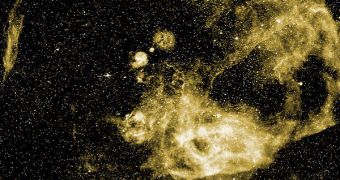Investigations conducted with a number of dedicated observatories around the world have revealed that some locations in the sky are cosmic ray “hot spots,” whereas others are relatively inactive in this area. The Vela supernova remnant was recently determined to be such a hot spot.
One of the instruments used to detect these radiations is the IceCube Neutrino Observatory (INO), which is buried under a thick layer of ice at the South Pole. The device is capable of detecting elementary particles such as muons and neutrinos.
Observations conducted here between May 2009 and May 2010 revealed that astronomers were wrong in assuming that cosmic ray sources are distributed evenly across the entire sky. This pattern is very visible in the Southern Hemisphere, but a little less so in the Northern Hemisphere.
“We don't know where they are coming from,” says University of Wisconsin expert Stefan Westerhoff of the cosmic rays. The expert and his team used INO in order to create the most comprehensive map showing the location of cosmic rays in the Southern Hemisphere.
Due to its extreme sensibility to particles, the observatory can detect both muons formed from collisions between neutrinos and the ice pack covering the detector and muons that appear when cosmic rays strike Earth's atmosphere.
During 12 months of study, INO saw 32 billion cosmic-ray muons, at an average energy level of some 20 teraelectronvolts (TeV). For comparison, the combined output of the two particle beams on the Large Hadron Collider only reaches 14 TeV.
Analysis of the data indicate the possible presence of a cosmic ray source some 1,000 light years away from Earth, in the Vela supernova remnant. The massive star that formed this structure blew up between 11,000 and 12,300 years ago, astronomers have established.
At the core of the remnant lies a 12-mile neutron star, which has the density of an atomic nucleus. It spins around its axis about 10 times per second, and astronomers classify it as a pulsar, Daily Galaxy reports.
Due to its behavior, it produces tremendously powerful electric and magnetic fields, which go on to accelerate particles in the remnant to nearly the speed of light. In effect, the pulsar is producing a vast, natural particle accelerator.
When seen by the NASA Chandra X-ray Observatory, the Vela supernova remnant appears as a compact X-ray emission nebula due to these phenomena.

 14 DAY TRIAL //
14 DAY TRIAL //